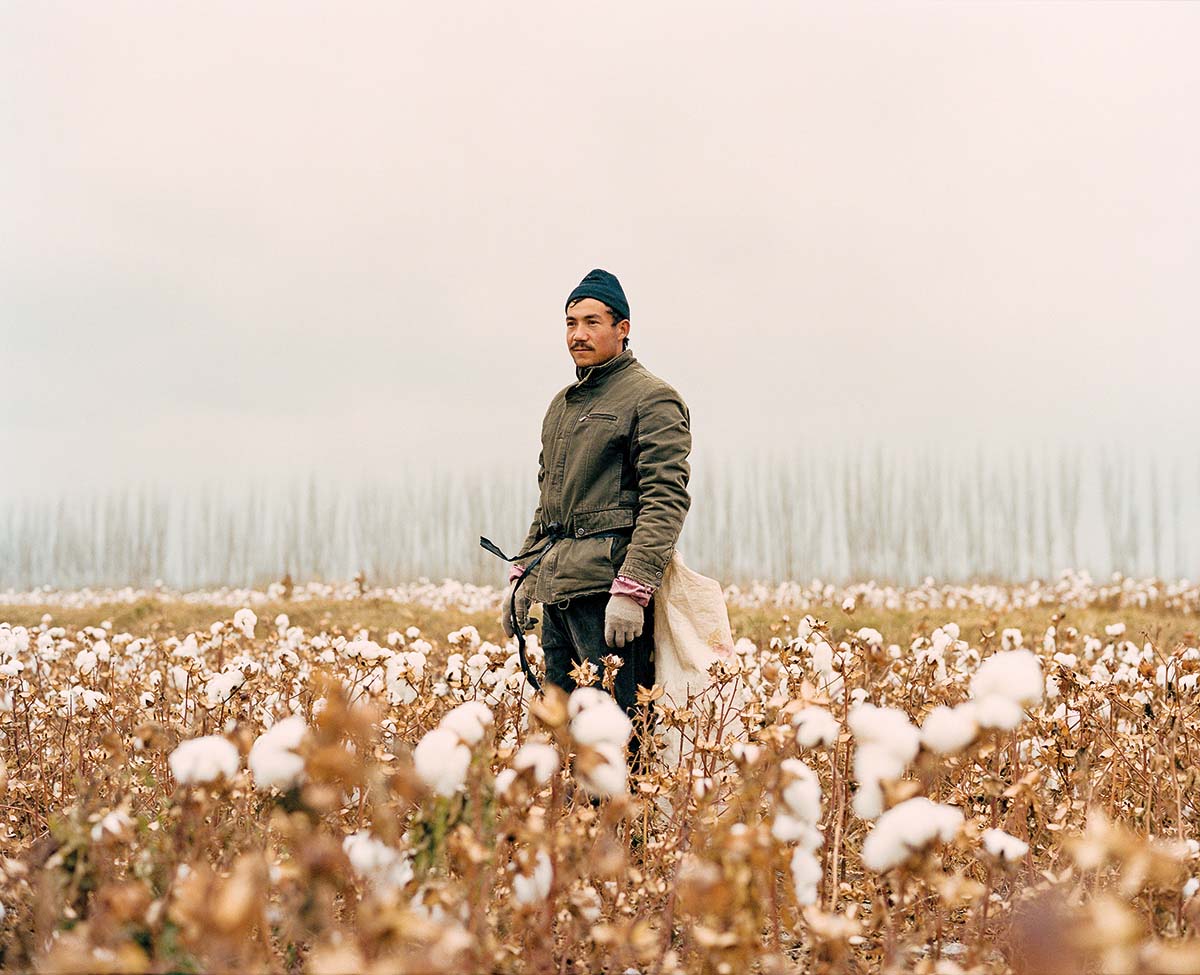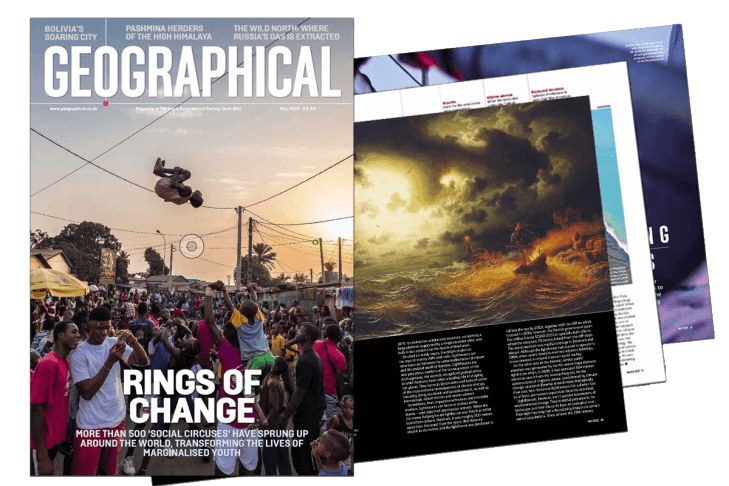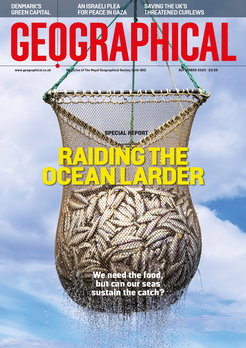
Photographer Patrick Wack documents changes in the Chinese Uyghur province of Xinjiang
By
It was an eventful July for French photographer Patrick Wack. His new body of work ‘Dust’, a three-year documentary of life in China’s much scrutinised Xinjiang region, was cast into the spotlight after American company Kodak posted – and later deleted – a selection of the images on its Instagram account. Online supporters of the Chinese Communist Party rose up in indignation, accusing Wack of making pictures to profit from the scrutiny around China’s human rights abuses in Xinjiang. It was a trenchant reaction that, to Wack and many others online, spoke of China’s denialism and dissimulation of the issue.

The ruling Chinese Communist Party (CCP) has been accused of severe human rights abuses, amounting even to genocide, against the Uyghurs of Xinjiang – a mostly Muslim group, more closely linked to Central Asians than to China’s ethnic Han-majority. The party has consistently maintained its innocence, often dismissing accusations as a failure on the part of Western democracies to comprehend Chinese politics and culture. Wack’s work was met with a similar sentiment by Chinese netizens; one article in the Chinese state-run Global Times newspaper even accused Wack of ‘hyping [the] Xinjiang issue to make more money’.
Xinjiang is home to 11.6 million Uyghur people whose language, Uyghur, stems from Turkish and is written in Arabic script with little similarity to Chinese. ‘A little like Tibet, Xinjiang has always carried a cultural and philosophical otherness with China,’ says Wack. Uyghur–Chinese relations are historically tumultuous: ‘Xinjiang’ itself translates to ‘new territory’ in Mandarin, stemming from the imperial-era conquest of the Uyghur native region. In the first half of the 20th century, parts of Xinjiang around the cities of Kashgar and Yining sought independence from China – moves quelled by the new Chinese communist government in 1949. Beijing has never forgotten the incident, an embitterment later fuelled by violent outbreaks in the region. In 2009, ethnic violence sparked in Urumqi, Xinjiang’s capital, killing 197 Han and Uyghur people.

In 2014, the CCP initiated a strategy to, ostensibly, minimise the perceived terror threat. They subjected Uyghur Muslims to stringent surveillance, and quickly erected internment camps which the party still maintains are used to ‘re-educate’ Uyghurs and other ethnic minorities as part of an essential anti-terrorism strategy.
However, investigative reports using satellite imagery and exclusive interviews with previous inmates have revealed the shocking conditions of internment camps, along with the extent of systematic repression and population control faced by the Uyghurs. The United Nations estimates that more than 1 million people have been interned at the CCP’s camps – that’s one in ten Uyghurs. Anything suggesting a Uyghur identity or indicating Muslim beliefs – such as growing a beard – is enough to land an individual in a camp. When inside, prisoners are politically indoctrinated and subjected to compulsory labour. Female prisoners have also documented forced sterilisation.

Few signs of such repression are detectable in Wack’s work – an absence quickly pointed out by many Chinese netizens seeing the work. But Wack’s subject choice was partly practical, partly artistic. ‘Photojournalists don’t have access to the camps or many signs of repression. Plus, you’re putting people in danger if you’re trying to talk to them,’ he says. ‘I don’t have images of Uyghur people being rounded up.’ Instead, Wack has opted to document life in the region, with the first half of his work beginning in 2016, later returning in 2019 to photograph the extent of change. ‘The book is about showing how in only a few years, the region itself has been radically altered. In 2016, it was still full of colours: you had golden domes and Muslim symbols everywhere and women wearing veils. In 2019, all of this had disappeared.’
The CCP’s crackdown on Uyghurs has seen the mass erasure of cultural centres and symbols: according to the Australian Strategic Policy Institute, a think-tank, 16,000 mosques in Xinjiang have been destroyed or damaged since 2016 – half were bulldozed; tombs have been destroyed; and the government now mandates Mandarin-only education in schools. In 2017, President Xi Jinping ordered that all religions in China should be Chinese in orientation. Since then, religious expression has been strictly controlled. ‘Even within the three years I was there I could tell the difference. Muslim and Middle Eastern symbols in the landscape had been removed; women weren’t veiled anymore; men could no longer wear beards. The cultural and religious essence was ripped out, and now it looks like anywhere in China, just in a desert.’

Stay connected with the Geographical newsletter!
In these turbulent times, we’re committed to telling expansive stories from across the globe, highlighting the everyday lives of normal but extraordinary people. Stay informed and engaged with Geographical.
Get Geographical’s latest news delivered straight to your inbox every Friday!
Significant demographic changes have also occurred. Recent decades have seen a mass migration of Han-Chinese into Xinjiang, allegedly orchestrated by state-run incentive schemes. ‘The strategy has been to turn the Uyghurs into a minority by demographically occupying the region with Han-Chinese.’ When Wack returned to Xinjiang in 2019 in the backdrop of acute Uyghur repression, he photographed an increase of Han-Chinese tourism in the region. In his work, there are no cultural symbols of Uyghur life, yet the patriotic waving of a Chinese flag is a recurring motif. ‘Xinjiang tourism has become part of the CCP’s PR thing, to show that Xinjiang is now a stable, secure and beautiful Chinese region.’ However, now he says that many resident Han-Chinese are leaving the area, having found discomfort in life alongside anti-Uyghur policies.
Stringent surveillance operations also undermine the CCP’s portrayal of a stable and secure Xinjiang. State police monitor Uyghurs using the Integrated Joint Operations Platform, a remote data-collection surveillance system tracking movement and mobile phones for signs of religious observation. Interviews with Uyghurs have revealed that the Chinese government appoints Han civilians and officials to stay in Uyghur homes to report on domestic activity. As a photographer, Wack got a taste of such surveillance: ‘In 2016 and 2017 I had some freedoms, but when I returned in 2019 it was a different world: the police presence had multiplied, and I was followed for maybe half the trip. Often, state police were waiting in the lobby of my hotel. They often forced me to delete my images.’

Like Tibet, Xinjiang – officially known as the Uyghur Autonomous Region – is autonomous according to the Chinese constitution, meaning it has some powers of self-governance. But in practice, both Tibet and Xinjiang are subject to restrictions by Chinese central government. ‘There’s a small fraction of Uyghurs who want independence, and those people are used by the Chinese Communist Party as scapegoats for the crackdown,’ says Wack. Many Uyghurs simply want the regional autonomy enshrined in the Constitution, and to preserve their religion and culture. Resolving economic disparities is another urgent need: ‘The north of Xinjiang is a wealthy region with huge hydrocarbon and construction sectors, but you very seldom see Uyghurs working in those industries,’ says Wack.


Subscribe to our monthly print magazine!
Subscribe to Geographical today for just £38 a year. Our monthly print magazine is packed full of cutting-edge stories and stunning photography, perfect for anyone fascinated by the world, its landscapes, people and cultures. From climate change and the environment, to scientific developments and global health, we cover a huge range of topics that span the globe. Plus, every issue includes book recommendations, infographics, maps and more!
Instead, many are busy picking cotton, often under forced conditions. One in five cotton garments sold globally contains cotton or yarn from Xinjiang. Evidence from The New York Times, The Wall Street Journal, Axios and others connects China’s forced detention of Uyghurs to the supply chains of fashion retailers, including the likes of Adidas, Lacoste and Ralph Lauren. Investigations have revealed that local officials are given targets for the number of people they must provide for state-sponsored labour programmes; and evidence has emerged that from 2017 to 2019, more than 80,000 Uyghurs were sent to work in factories producing goods for dozens of multinationals. On 22 July, 190 organisations issued a call to action, urging clothing brands to stop using cotton suppliers embroiled in Uyghur forced labour. More broadly, there is even a planned boycott of the 2022 Beijing Winter Olympics by groups that oppose China’s actions in Xinjiang.
Ultimately, Wack hopes that his work will help to raise more awareness, creating a rare portrait of life in Xinjiang. ‘There’s a lot of Chinese response to accusations, saying things like, “China is a big country that the Western political system cannot fully understand”. But I think now the Chinese government is showing its real face.’

Dust, a 208-page compilation of Wack’s work, will be released on 7 October 2021.
Pre-order a copy at www.andrefrereditions.com




